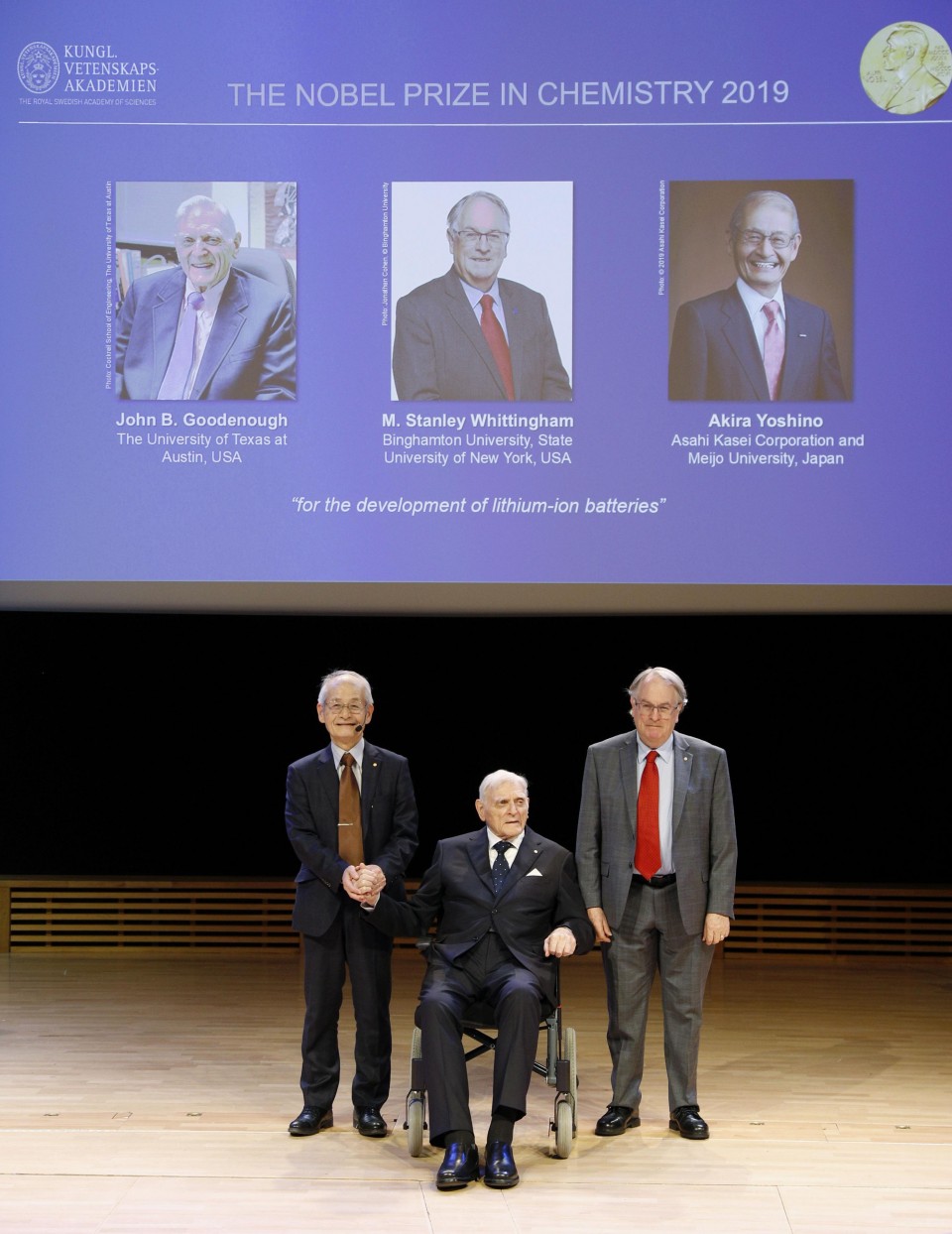The Japanese chemist, Akira Yoshino, has delivered his Nobel lecture in Stockholm with a predication that lithium-ion batteries ‘will play a central role’ in achieving a sustainable society in which the environment, economy and convenience are balanced in harmony.

The Science Museum marked this Nobel moment by putting a lithium-ion cell on display – celebrating an everyday technology that changed the world.
Yoshino was awarded the Nobel Prize in Chemistry in October along with Stanley Whittingham and John Goodenough. The work of these three chemical engineers on lithium-ion batteries sparked a technological revolution – and now most of us use lithium-ion batteries in our daily lives. They power the devices we have come to rely on to communicate with one another, find our way around and entertain us. Lithium-ion batteries are used in technologies as varied as hearing aids, mobile phones, insulin pumps and electric cars.

Today, we take for granted that we can recharge this technology again and again. But before the innovations made by Akira Yoshino, John Goodenough and Stanley Whittingham, it wasn’t possible to safely recharge batteries. This meant that once they ran out of power, they had to be thrown away.
The lithium-ion battery changed this. In the 1970s and 80s, innovations in chemical engineering made them safe and efficient to recharge. They were introduced to the commercial market in 1991, opening a new world of possibilities for inventors. This began a technological- and social – revolution in the 1990s, enabling the widespread use of portable devices like mobile phones, laptop computers and MP3 players. They also made existing medical technologies, like pacemakers and insulin pumps, more reliable.

Batteries could soon play an even more significant role in our lives and help us ensure a more sustainable future.
It has become critical that we reduce our greenhouse gas emissions. Getting more of our energy from cleaner sources, like solar panels and wind turbines, will be an important part of this. But many sources of renewable energy, like wind and solar, are unpredictable, providing varying amounts through the day and year, so supply doesn’t always match demand. Unlike coal-fired power plants, they can’t be turned off and on as our energy needs shift. Being able to store large amounts of renewable energy would ensure we always had enough available. Lithium-ion batteries are one of the technologies being explored to do this.

Yoshino believes that lithium-ion will remain the dominant battery form for at least another decade. But chemical engineers are also investigating other materials that could someday allow batteries to store large amounts of energy safely. There is already a huge range of battery types for different uses, and in the future, this will likely expand even further to suit the needs of various technologies.
Of course, batteries alone cannot solve our energy problems. We need to make our homes more efficient so we can reduce our consumption and adapt how we eat, travel and shop if we are going to limit our impact on the environment. But batteries could provide one of the solutions we need to make our future more sustainable.
You can now see a lithium-ion cell on display in the Science Museum’s Tomorrow’s World gallery.
